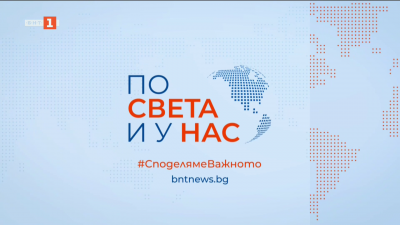Gold Treasure of Preslav much more valuable than previously thought
The Gold Treasure of Preslav appeared to be much more valuable than previously thought. The medieval ornaments and the chemical composition of gold and stones were analyzed by the Mainz Research Institute...

The Gold Treasure of Preslav appeared to be much more valuable than previously thought. The medieval ornaments and the chemical composition of gold and stones were analyzed by the Mainz Research Institute.
After it was displayed in the Louvre Museum in Paris, restored and in all its splendour, the greatest treasures of the Great Preslav is going on a dispaly in the National Archaeology Museum in Sofia frrom November 6.
The Preslav Gold Treasure was discovered in 1978, in an area located right to the northwest of the ruins of the city of Veliki Preslav (“Great Preslav") in today’s Northeast Bulgaria, which was the capital of the First Bulgarian Empire (632/680 – 1018) from 893 until 970.
It remains one of the richest and most glamorous finds from the medieval Bulgarian Empire.
The part of the Preslav Gold Treasure which is displayed in the museum contains a necklace, part from a second necklace, parts from a tiara, several various massive earrings, rings, gold appliques for clothes decoration, precious stones and pearls, gold and gold-plated buttons, silver spoons, parts of a cup, horn metal decorations, and 15 silver Byzantine coins – of Byzantine Emperors Constantine VII the Purple-born (Porphyrogenitus) (r. 913 – 959) and Romanus II (r. 959 – 963).
Researchers are almost sure where it comes from and even to whom it belonged. The Byzantine school of the 9th-10th centuries and the royal symbols in the ornaments were presents to Princess Maria, the granddaughter of the Byzantine emperor for her wedding with the Bulgarian Tsar Peter. Some of the ornaments tell other interesting stories. Like running dogs on one of the earrings that has no place in Christian iconography.
Dr. Andrei Aladzhov, Medieval Archeology Section, NAIM-BAS: In Islamic iconography they symbolically portray the power of the person wearing the earpiece, a prince or other ruler of the Ottoman caliphate.
It is probably a gift from an Arab prince or ruler. The spherical buttons are astounding - they are the only ones in the world where cell enamel is laid on a curved surface and not on a flat one. For professionals, this is the pinnacle of the ultimate technology of its time.
Chemical analysis of the double-sided necklace showed that the stones were not amethyst, but rubies and garnets, the crystal was not mountainous but fluorite. The necklace is part of every exhibition in the world, as well as the gold tiara. According to scientists, it was probably worn by the Tsar (king). Although not as precious, the small treasure also raises questions - who did it belong to and why it was hidden in a carved hole in a stone from the wall.
Snezhana Goryanova, Medieval Archeology Section, NAIM-BAS: Probably built into the wall, closed well with a stone stopper and probably hidden from the eyes of others. The owner may have hidden them for a certain period of time.
In addition to gold, the museum also presents more from Preslav treasures: the original painted white ceramics and ceramic iconostasis that are one-off in the world, and epigraphic inscriptions and graffiti with a Glagolitic and Cyrillic alphabet.
Get the latest news wherever you are!
Follow us on
Facebook
and
Instagram
Follow BNT’s YouTube channel
You can now also watch us on
TikTok
Find us on
Google News























